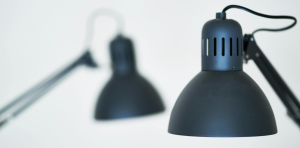With the rise of digital technology, many office employees now spend much of their workday focused on computer screens for emails, documents, and virtual meetings.
While technology has significantly improved productivity, it also brings a new set of challenges for employee health, particularly when it comes to vision. Poor workplace lighting can lead to a variety of vision problems, strain, and discomfort, ultimately affecting overall productivity and well-being.
Why Office Lighting Matters for Vision Health
Good lighting isn’t just about aesthetics; it has a direct impact on how our eyes feel and function throughout the day. Without it, workers are more likely to experience discomfort and visual fatigue, leading to headaches, blurred vision, dry eyes, and even neck and shoulder pain from squinting. These symptoms are often referred to as “computer vision syndrome” or “digital eye strain,” and they can result from poor lighting or improper positioning of workstations.
Without it, people are much more likely to deal with issues like:
Eye Strain: Lights that are too dim or too harsh force your eyes to work harder, causing fatigue.
Glare: Harsh overhead lighting or direct sunlight on screens can create glare, making it difficult to concentrate.
Reduced Focus: can lead to distractions and make it challenging to maintain focus and productivity.
Lower Mood and Comfort: Poor lighting can contribute to a lower mood and increase stress, making the workplace feel uncomfortable and unwelcoming.
Simple Ways to Improve Office Lighting
You don’t need a full office makeover to make lighting more eye friendly. Here are a few practical changes that can help:
1. Make the Most of Natural Light
When possible, position desks near windows to let in daylight. Natural light is softer and easier on the eyes than artificial light. Be mindful of direct sunlight and use blinds or shades to reduce glare without completely blocking the light.
2. Cut the Harsh Overhead Lighting
Old fluorescent fixtures can be too intense and cause glare. If possible, switch to LED lighting, which provides a softer and more consistent light. Also, avoid placing desks directly under overhead lights.
3. Add Task Lighting
A simple desk lamp with adjustable brightness is a great way to provide additional light where it’s needed, such as for reading, writing, or working on detailed tasks. It helps reduce strain from overhead lighting and bright screens.
4. Adjust Screen Position and Brightness
Ensure computer screens aren’t catching glare from windows or overhead lights. Ideally, screens should be positioned perpendicular to windows. Adjust the brightness so your screen isn’t too bright or too dim in comparison to the room’s ambient lighting.
5. Let People Control Their Lighting
Everyone has different preferences when it comes to lighting. Some prefer a bright workspace, while others prefer a softer setting. Providing adjustable lighting at workstations allows employees to create an environment that works best for them.
6. Pay Attention to Colour Temperature
Lighting has a colour temperature, measured in Kelvins (K). For office environments, lights in the 4000K to 5000K range are ideal because they mimic natural daylight. They help people stay alert and focused without being too harsh or too warm.
7. Encourage Regular Screen Breaks
Even with perfect lighting, staring at a screen for long periods is hard on the eyes. A simple trick is the 20-20-20 rule: every 20 minutes, look at something 20 feet away for at least 20 seconds. It’s an easy way to give your eyes a much-needed break.
How Employers Can Make a Difference
Good office lighting is essential for creating a healthy and productive work environment. It influences how employees feel, their ability to focus, and how comfortably they get through the day.
Simple updates, like adding task lamps or adjusting overhead lighting, can reduce eye strain and improve morale.
When combined with clear reminders for screen breaks and thoughtful workstation setups, these changes help support a healthier and more engaged team.
Need guidance on office lighting standards and vision health policies? Our team can help.







